Recent Articles
Popular Makes
Body Types
2016 Ford Edge Road Test & Review

2016 Ford Edge interior
Ford is arguably the company responsible for the proliferation of the contemporary SUV. The company’s Explorer—introduced in 1990 as a 1991 model—turned the attention of a huge swath of the motoring public to the sport utility vehicle. Combining the ruggedness of a truck with the creature comforts of a car, Explorer found ready acceptance.
Eventually though, buyers wanted the convenience and comfort of a car, without the ride and handling compromises imposed by the truck platform upon which the Explorer was built. Crossover sport utility vehicles based upon car platforms became the thing—and continue to dominate the segment to this day.
Ford’s response was the 2007 Edge. Combining the ride and handling of a sedan with the spaciousness and elevated ride height of a sport utility, the Edge quickly became one of Ford’s best selling models. The company revised the Edge from the ground up for the 2015 model year. Thus, the 2016 Ford Edge bows with but few changes.
Models & Pricing
For the 2016 model year, Ford is offering the Edge in four trim levels.
Standard equipment on the $28,100 2016 Ford Edge SE includes 18-inch alloy wheels, automatic headlights, A/C, a split folding back seat, a tilt and telescoping steering wheel, cruise control, a 4.2-inch video monitor, a rearview camera, and Ford’s Sync system. This incorporates voice controls, Bluetooth, and smartphone applications integration.
Starting at $31,500, the Edge SEL adds heated exterior mirrors, an auto-dimming interior rearview mirror, a rear parking sensor array, Ford’s exterior touch sensitive entry pad, keyless entry and ignition, dual-zone automatic climate control, a leather cover for the steering wheel, and satellite radio.
Ford’s $2,700 optional 201A Equipment Group is also offered for Edge SEL. This brings the MyFordTouch infotainment system with its eight-inch touchscreen, a reconfigurable instrument panel, and Sync Services. This garners traffic info, as well as turn-by-turn directions. Other 201A features include leather upholstery and a nine-speaker audio system.
The equipment list for the $35,600 2016 Ford Edge Titanium encompasses all of the above, plus 19-inch wheels, a handsfree automatic tailgate, LED taillights, nicer interior trim, ambient lighting for the interior, heated front seats, and a 12-speaker Sony audio system.
The 2016 Ford Edge Sport starts at $38,100 and adds leather and suede front seats, a turbocharged V6 engine, 20-inch wheels, and a sport-oriented suspension system.
Other optional features include lane departure warning, lane keep assist, self-parking, and smart cruise control, along with forward collision warning and mitigation.

Photo by Ford
Key Changes
With the 2015 redesign came a stiffer body structure and a revised suspension system, which improved both ride and handling characteristics. The front-wheel drive Edge still uses a MacPherson-type front suspension, but at the rear, the Ford runs an integral-link independent setup with coil springs and a larger antiroll bar.
This, in conjunction with the new more rigid body structure delivers a quieter and smoother ride, while at the same time enabling superior handling. Contributing to the enhanced rigidity is the incorporation of high-strength steel in the construction of the 2016 Ford Edge’s body.
The base 2.0-liter engine was reworked to deliver more power, as well as better fuel economy than the similar engine it replaced in the Edge’s portfolio. Further, the newly remodeled Edge is 3.9 inches longer than the 2014 model, which gives it more interior space for passengers as well as expanded cargo capacity.
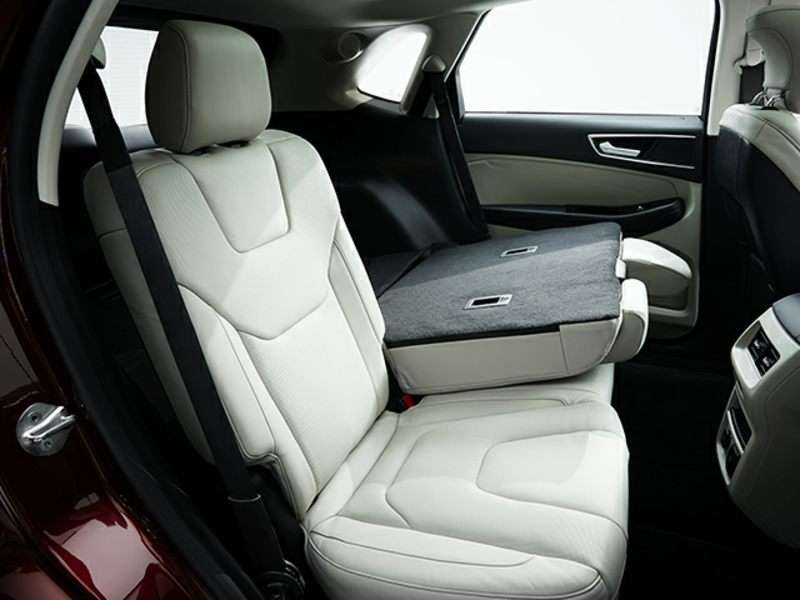
Interior Design
The plush factor is way higher in this new version of the Edge. Soft touch surfaces abound, and with them so does the perception of quality. Everywhere your body comes into contact with the 2016 Ford Edge (or is likely to come into contact with the Edge) is padded in some way.
This holds throughout the interior wherever it’s practical. However, the center stack uses hard plastic and some slightly cut-rate looking buttons. While the overall effect is arguably good-looking, when compared to the other interior components, it falls off a bit.
The new Ford Sync 3 interface is bold, crisp and much easier to use than the outgoing MyFord Touch interface. A single bar at the bottom of the screen allows direct access to Audio, Climate, Navigation, Applications, and Communications functions. The system responds very quickly, and is exceptionally logical. The layout is considerably less complex, and the color scheme is much more pleasing to the eye.
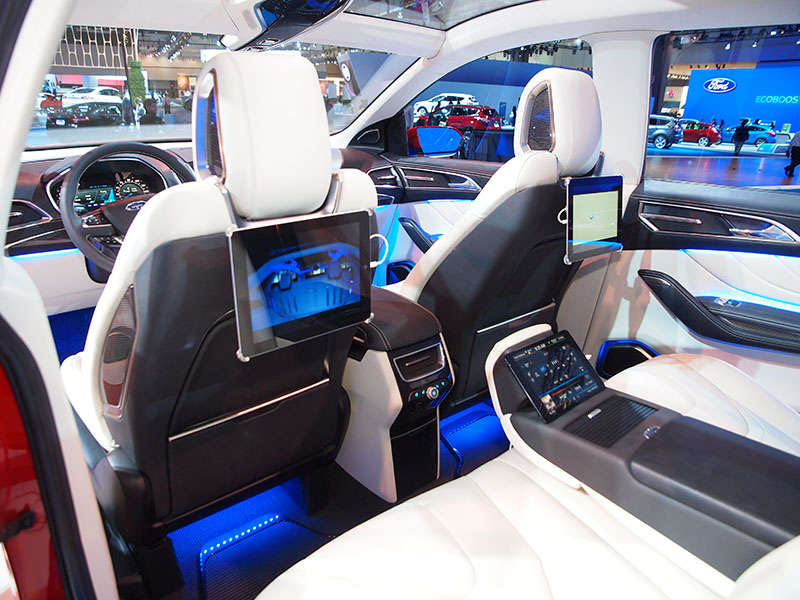
Comfort & Cargo Capacity
As we mentioned before, the new Edge is a bit less than four inches longer than the previous version of the mid-size crossover utility vehicle. Ford’s product team wisely took advantage of this additional length to improve the interior comfort and cargo capacity of the 2016 Ford Edge.
The front bucket seats offer plenty of legroom, and the rear seat occupants enjoy additional real estate, too. The perches in our Titanium-trimmed tester were upholstered in leather, and while we found them nicely supportive, the seat bottom could have offered more thigh support. Interestingly however, shorter passengers complained they had to raise the seats too high to see out of the Edge.
The multiple adjustments afforded the steering wheel do help somewhat in this regard; however, as a newly introduced model, we were looking for it to build upon the successes of the previous model, rather than introduce flaws of its own.
Total cargo capacity is a rather generous 73.4 cubic feet when the rear seats are folded away. Deploy them, and you still can claim 39.2 cubic feet of capacity. This is pretty impressive for the class.
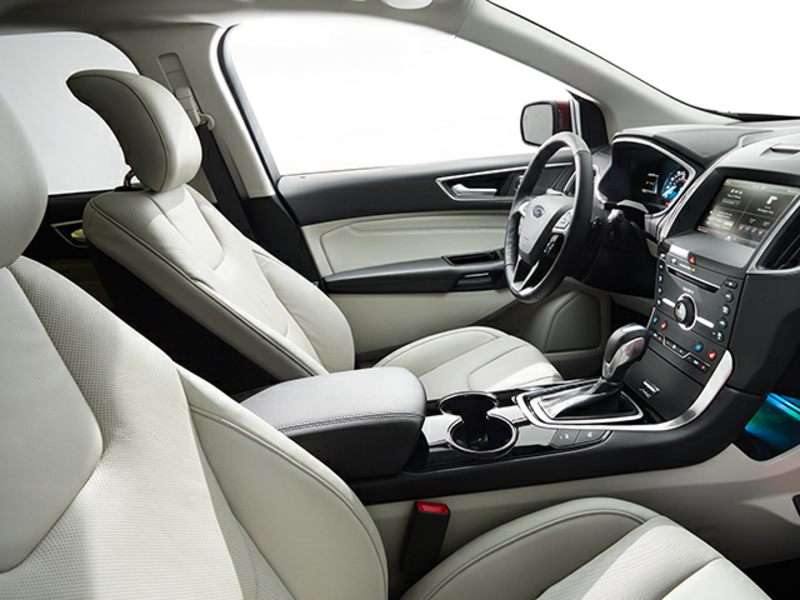
Safety Features & Crash Test Ratings
Like all modern Fords, the 2016 Ford Edge comes to market with a remarkably robust roster of advanced safety features.
Depending upon how you tap into the options list, you can drive away in an Edge equipped with inflatable outboard rear seatbelts, blind spot monitoring, lane departure warning and mitigation, forward collision warning and mitigation, and a braking system capable of priming itself for emergency stops when the Edge senses a collision is imminent.
Speaking of clairvoyance, Ford’s Curve Control is capable of sensing when you’ve entered a curve too quickly and the Edge is potentially in danger of tipping over. In this instance, the Curve Control system enhances your control over the Edge to prevent this calamity
Naturally, more prosaic modern safety features are fitted as well; these include ABS, traction control, stability control, a full slate of airbags, a rearview camera, proximity sensor arrays, and emergency crash notification capable of summoning assistance in severe situations.
Ford’s MyKey system is also standard, enabling the vehicle’s administrator (read: owner) to preset various operating parameters and elect to receive notifications when they are exceeded. In other words, MyKey will snitch if your kid does stupid stuff while out in your shiny new 2016 Ford Edge.
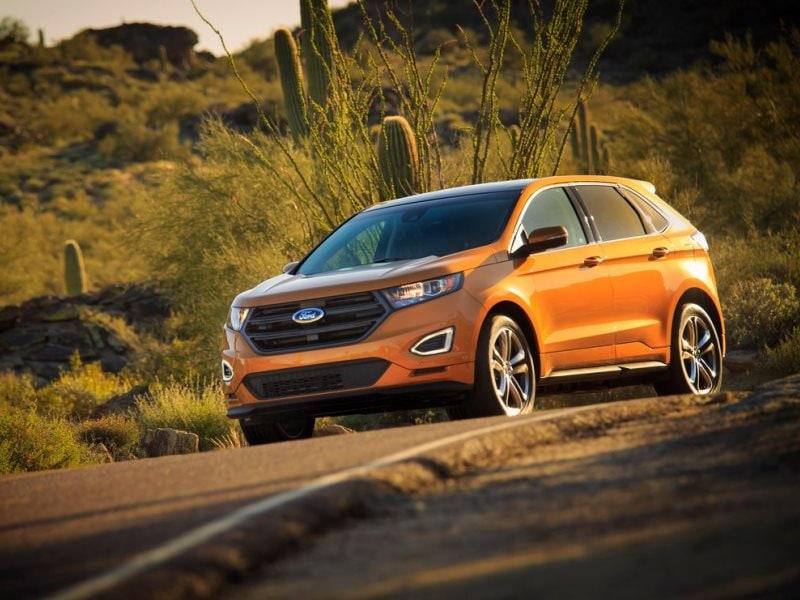
Photo by Ford
Engines & Fuel Economy
Three engines, as well as a choice of front- or all-wheel drive, and a six-speed automatic transmission are offered to motivate the 2016 Ford Edge.
We mentioned the 2.0-liter turbocharged inline-four earlier in this posting. The engine generates 245 horsepower and 275 ft-lbs of torque. According to EPA estimates, you can anticipate 24 miles per gallon in combined city and highway operation with front-drive, and 23 mpg with all-wheel drive.
There is also a normally aspirated 3.0-liter V6, which is good for 280 horsepower and 250 ft-lbs of torque. Combined city/highway fuel consumption with this engine comes in at 21 mpg with front-drive, and 20 with all-wheel drive.
The top line Edge engine offering is fitted to the 2016 Ford Edge Sport. This is a 2.7-liter V6 good for 315 horsepower and 350 ft-lbs of torque. Fuel economy is rated at 21 mpg combined for the front-drive powertrain, and 20 with all-wheel drive.
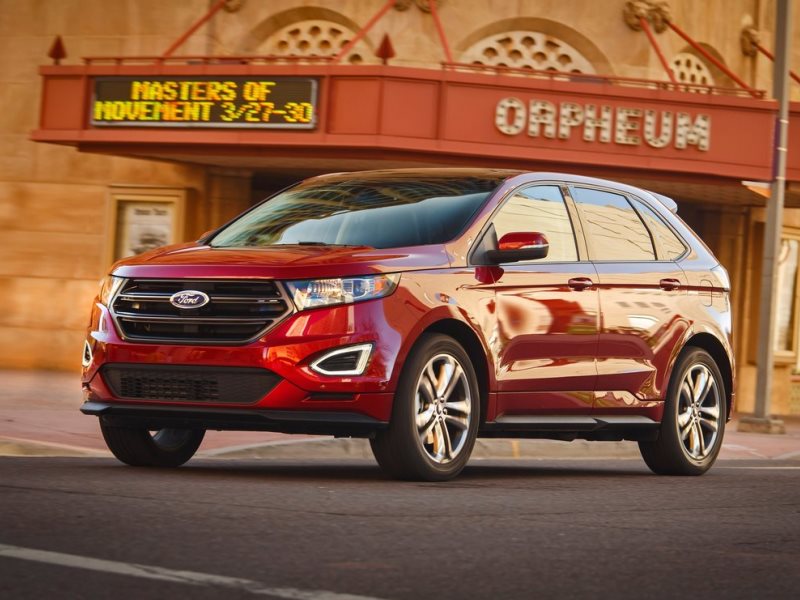
Photo by Ford
Performance
Thanks to the structural improvements and revised suspension system, the Edge drives more like a well-sorted car than ever before. Handling is competent and predictable, ride quality is smooth and relaxed, even over rough surfaces, and tire roar on the highway is significantly minimized.
All three engines deliver good power, but for the record, the normally aspirated V6 is kind of redundant. The turbocharged four delivers more torque, slightly less horsepower and better fuel economy. It’s also thoroughly outclassed by the turbocharged V6 (though you do have to go full-boat Edge Sport to get it).
All in all, the Edge is quite rewarding to drive, and refreshing for your passengers too.
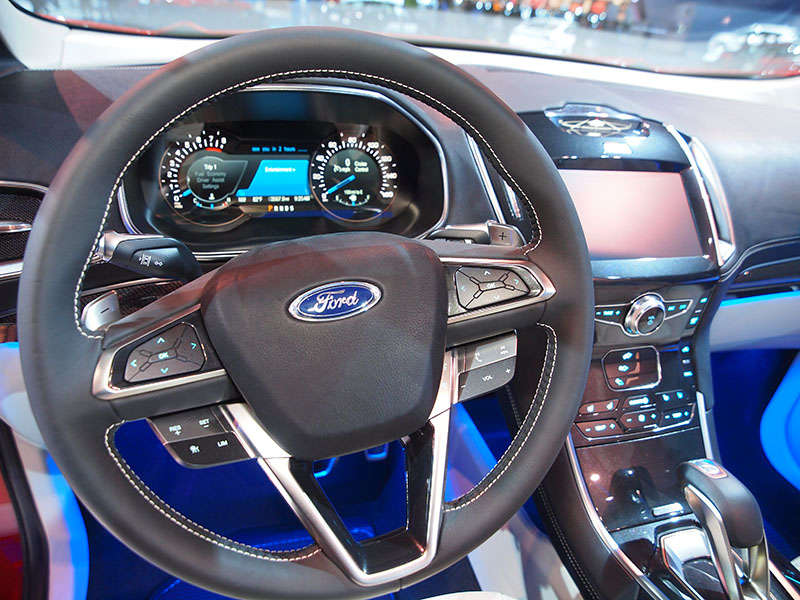
Final Thoughts
This category has come a long way since the first Explorer was such a hot ticket. In fact, in comparison, that truck-based model would seem totally unsophisticated today, largely because it is—by comparison.
That said, as much as we like it, the Sync 3 system could also use a dial controller for the interface when the Edge is rolling along. Trying to hit a moving target on a touchscreen when the vehicle is in motion can be something of a frustrating experience.
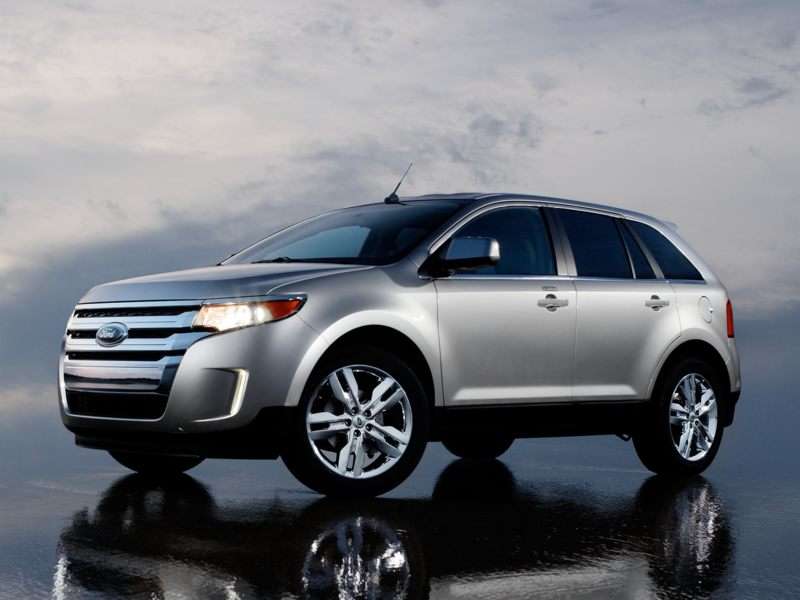
Photo by Ford
Pros & Cons
The 2016 Ford Edge is quiet, smooth, and full of tech. Further, it delivers reasonable fuel economy and is handsome to boot. However, the comfort of its seats could be improved.

Photo by Ford